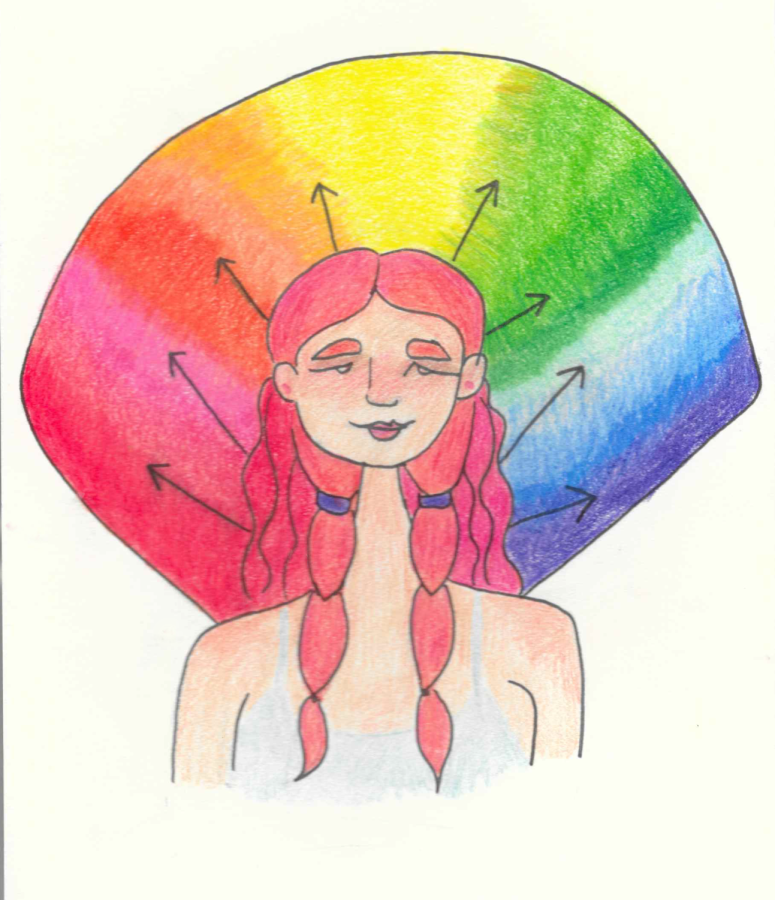Somewhere in the galaxy − Kent State students look at sexuality as a spectrum
April 3, 2019
Sexuality is a major part of the human experience. It helps us build connections with others, strengthen relationships and, for most, can be an intimate experience.
According the website Sex Info Online, people identify with a multitude of sexual orientations and different levels of feelings toward others. It’s important to understand there are more than just the common labels of gay, straight and bisexual.
Some members of the Kent State community recognize sexuality as a spectrum and embrace the positive impacts which come with this new way of understanding human sexuality.
“Instead of it being a linear line, we look at it as a galaxy,” said Ken Ditlevson, the director of the LGBTQ Student Center
at Kent State. “There are no boundaries, no definitions. There are really lots of other sexualities that others have not found yet.”
By allowing people to talk about sexuality in this mindset, they begin to feel less isolated and stuck inside of a box, Ditlevson said.
This feeling of being stuck that Ditlevson explained is something Kim Floyd, a sophomore interior design major, felt before learning about the spectrum explanation of sexuality.
“There are no boxes, people do not fit into boxes. No matter how hard you try,” Floyd said.
As a bisexual woman, Floyd said she has found her own place in the spectrum and is able to recognize the different levels within it.
“I identify as bisexual, but I lean more towards females,” Floyd said. “I know someone who identifies as a lesbian but is dating a guy and I know someone who identifies as bisexual but dates men and only hooks up with women.”
While Floyd and others are open to the idea of fluid sexuality, there are still those who feel that labels and categories work best.
“(Some) people want to categorize people (identifying on the spectrum) into categories like gay or bisexual, but there are many people who identify between these typical categories,” Floyd said.
Sophomore biotechnology major Dylan Kelsey believes sexuality is a spectrum in regard to the different degrees of attraction a person experiences toward others.
“In my experience, most people can, regardless of sexual identity, recognize or find attractiveness in individuals of whatever gender they typically aren’t interested in,” Kelsey said. “For example, in my case, identifying as a gay male, I can still look at a woman and recognize she’s attractive.”
There can be a struggle between balancing labels and sexual attraction.
“Students feel like the expectation associated with specific labels are hard to handle,” Ditlevson said.
With labels on sexuality, many associated stereotypes come into play and students struggle with the pressure of trying to fit the roles around the labels, he said.
Kelsey has found that sexuality-based stereotypes play into the perception of homosexuality almost in the same way racial stereotypes affect perceptions on racial matters.
“They’re a shoddy method to blanket a group of people in a negative lighting,” Kelsey said. “Usually, I’ve found homophobic stereotypes used as an excuse for ignorance or they stem from misinformed and misguided beliefs.”
Part of the issue with these stereotypes comes from the media, Floyd said.
“I feel like in the media you hear the headlines of so-and-so comes out as gay or as bisexual, the media always puts labels on things,” Floyd said. “So, when someone doesn’t really know much about the spectrum and only see those headlines, they want to apply those titles to the people they see.”
Ditlevson also sees the media as part of the reason for this labeling issue.
“These images have been portrayed in the media, particularly the film industry,” he said.
When you break the barriers around labels in sexuality, stereotypes become less powerful and help students become more comfortable with themselves and their sexualities, Ditlevson said.
“One student was coming out as a lesbian and she said, ‘now I have to go buy a bunch of flannel shirts and cut my hair short’” he said. “Luckily she had some good friends who told her she did not have to do that.”
Viewing and understanding sexuality as a spectrum will help people move away from these stereotypes, Floyd said.
“People need to learn about it from experience and meeting people who identify on the spectrum and seeing first-hand how they act and what they do,” Floyd said. “Be educated, learn more about people who aren’t you, try to see how other people feel and how other people look at the world.”
Kody Elsayed covers relationships. Contact him at [email protected].
Allyson Nichols covers music, theatre and dance. Contact her at [email protected].













